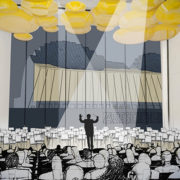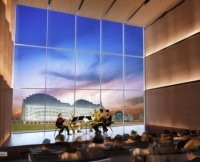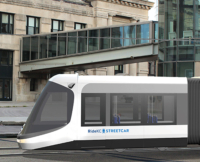UMKC’s Downtown Arts Campus Takes Big Leap Forward
Downtown and the University of Missouri-Kansas City together will take a major step forward today with the announcement that land has been acquired for a new UMKC Conservatory campus.
That step came at 8 a.m. Monday morning, as leaders from UMKC, the City of Kansas City, Missouri and the Downtown Council gather at the Kauffman Center for the Performing Arts to take the leap together. The Kansas City Star published the following editorial about this milestone moment in Sunday’s edition.
Now comes the harder part: raising $21 million in private donations over the next two years — adding to $27 million already counted — to leverage a hoped-for $48 million match from the state of Missouri to build the project.
As reported in The Star on Sunday, private donors have committed $6 million to buy a full block’s worth of properties from four owners just south of the Kauffman Center for the Performing Arts. For good reasons, leaders say that’s the ideal spot for a new complex that would house the Conservatory of Music and Dance, the first phase of the university’s long-range vision for a downtown arts campus.
As Chancellor Leo Morton and conservatory dean Peter Witte point out, the close proximity to the Kauffman Center will create endless learning opportunities for conservatory students and will help expand partnerships with schools and the city’s performing arts organizations. All that can be a major selling point in the effort to attract new students.
For another, the site — bounded by 17th and 18th streets, Central Avenue to Broadway — bridges the Kauffman Center and the Crossroads Arts District, contributing to that neighborhood’s identity as a creative melting pot connecting the arts, technology and entrepreneurship.
Julia Irene Kauffman jump-started the university’s fundraising for this project nearly a year ago when she issued a $20 million challenge grant from the Muriel McBrien Kauffman Foundation, the principal funder of the Kauffman Center. An anonymous donor has pledged $1 million. Morton and Witte have been awaiting a site plan and plausible renderings to help hone their pitch to other potential benefactors. That work begins in earnest now.
Highlighting one growing aspect of the conservatory’s mission, Witte told The Star, “Noting that our jazz program could be on 18th Street is pretty intoxicating.” The implication, of course, is that the school can make new connections to the historic heart of Kansas City’s jazz legacy about a mile to the east.
University officials have traveled to and researched geographical alignments of music schools and professional concert halls in New York, Boston and even tiny Columbus, Ga., to make their case for academic and civic synergy. It makes a lot of sense, and it’s gratifying that city officials and business groups such as the Downtown Council have bought into the concept in a large way.
Donors and others will naturally have questions about the value of the concept and details yet to be determined. Morton is particularly persuasive that UMKC’s role as an arts center for the university system will be heightened by the downtown campus and that all students, not just those in the conservatory, will benefit from their exposure to arts education. And those with a stake in the growth of downtown have long championed the idea that a concentrated influx of hundreds of young people will add energy to the area and enrich the urban fabric.
Like the rising sounds of a Beethoven symphony, this project, one of the Chamber of Commerce’s “Big Five” civic priorities, is gathering steam. Morton is optimistic that the necessary private funds will be found and that Missouri lawmakers will follow through with a match under the two-year-old 50-50 plan. Harmony is certainly in order.



